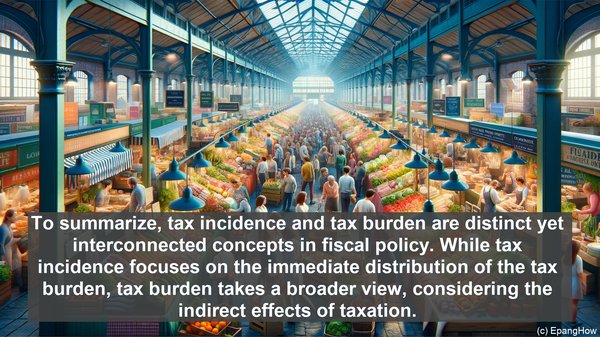Introduction: The Complexities of Taxation
Hello everyone, and welcome to today’s article on the intricacies of taxation. When it comes to fiscal policy, understanding the concepts of tax incidence and tax burden is crucial. These terms may sound similar, but they have distinct meanings and implications. So, let’s dive in and explore the difference between tax incidence and tax burden.

Defining Tax Incidence: Who Bears the Burden?
Tax incidence refers to the distribution of the economic burden of a tax among different individuals or groups in an economy. It answers the question: Who ultimately pays the tax? While it may seem intuitive to assume that the party directly paying the tax, such as a consumer or a business, bears the burden, the reality is often more complex. In fact, the burden of a tax can be shifted to other parties, depending on the elasticity of demand and supply for the taxed good or service.
Factors Influencing Tax Incidence
Several factors play a role in determining tax incidence. One of the key factors is the elasticity of demand. When the demand for a good or service is inelastic, meaning that consumers are less responsive to price changes, the burden of a tax is more likely to be borne by the consumers themselves. On the other hand, if the demand is elastic, with consumers being highly sensitive to price changes, the burden can be shifted to the producers or suppliers, who may choose to increase the price or reduce the quantity supplied.
Supply Elasticity and Tax Incidence
Supply elasticity, which measures the responsiveness of producers to price changes, also affects tax incidence. When the supply is inelastic, meaning that producers are unable to quickly adjust their production levels, they are more likely to bear a significant portion of the tax burden. However, if the supply is elastic, with producers being able to easily adjust their output, they may be able to shift the burden to the consumers by increasing the price less or not at all.
Tax Burden: A Broader Perspective
While tax incidence focuses on the immediate distribution of the tax burden, tax burden takes a broader view. It encompasses not only the direct burden of the tax but also its indirect effects on the overall economy. For example, a tax on a specific industry may lead to reduced investment, job losses, or even a decline in the competitiveness of the industry. These broader consequences, often referred to as the ‘excess burden’ or ‘deadweight loss’ of taxation, are important considerations in policy-making.

Policy Implications: Balancing Equity and Efficiency
The concepts of tax incidence and tax burden have significant policy implications. On one hand, policymakers aim for equity, ensuring that the tax burden is distributed fairly. On the other hand, they also consider efficiency, aiming to minimize the distortions and inefficiencies caused by taxation. Striking the right balance between these two objectives is often a challenge, and it requires a deep understanding of the economic dynamics at play.
